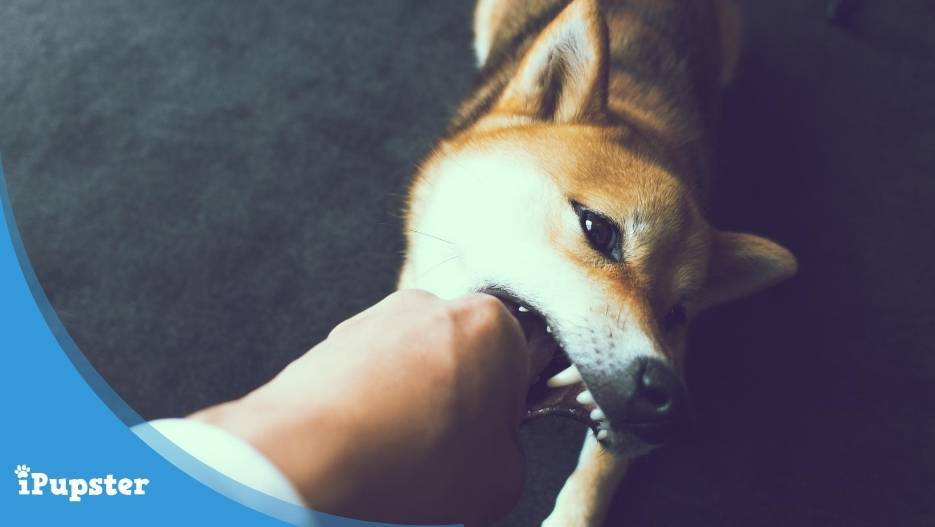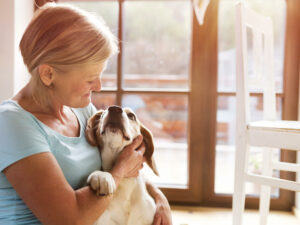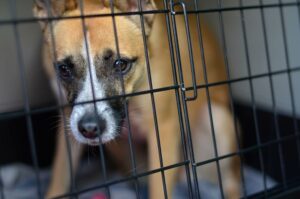Dogs make wonderful companions and family pets.
As a responsible dog owner, it’s important to know how to prevent dog bites even if you trust your own dog (or dogs) completely.
This guide tells you everything you need to know including why dogs bite, warning signs to look for, and tips for prevention and safety.
Why Do Dogs Bite?
There are many reasons why a dog might bite someone.
You might be surprised to hear that most of the time dogs bite people they know, and bites can happen even with dogs that aren’t usually aggressive.
A bite could happen when a dog is:
- Scared
- Nervous
- Eating
- Playing
- Protecting something important to them (like toys or bones)
- Not feeling well
- Wants to be left alone
It’s important to notice these situations and know when to keep your distance to avoid being bitten.
You should also know when to stop other people from approaching your dog to avoid them biting a stranger.
Approximately 1 in 5 people bitten by a dog requires medical attention.
How To Approach A Dog Properly
Learning how to approach a dog the right way is an important safety skill. Union Lake Veterinary Hospital shares some tips on how to approach dogs safely on their YouTube video.
The ULVH suggests making sure a dog wants to be pet before approaching them.
Do they look relaxed? Are their eyes soft and are they seeking eye contact? Is their tail relaxed or wagging?
These are just a few body language signals you can look for that indicate a dog is friendly.
A few other tips to remember are:
1. Always ask if it’s okay before you pet someone else’s dog, especially if you don’t know them.
2. Be still and let the dog approach you first. Stay relaxed with your hands open, but don’t stick them in the dog’s face.
3. Make sure the dog has seen you and sniffed you before you pet them. After petting, take a minute to make sure they still look comfortable/at ease before you continue.
Never break up a dog fight. Don’t pet a dog that looks threatened or fearful, is on high alert, barking a lot, or hides behind their owner.
Every dog is different, but there are some areas where most dogs don’t like to be pet.
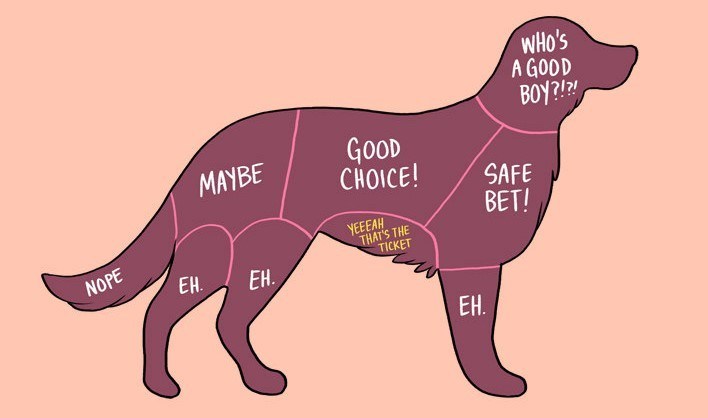
Source: Rover.com
When petting a new dog that seems happy to be getting attention, stick to areas like the head, neck, chest, upper back, and maybe a belly rub if they roll over for you!
Avoid touchy areas like the legs, paws, tail, and lower back.
What You Can Do As An Owner To Prevent Dog Bites
Your family knows your dog but when strangers approach, are you sure your dog won’t ever get startled and bite?
The key to preventing this situation is making sure your dog is properly socialized.
The American Veterinary Medical Association explains that,
Socializing your pet helps your dog feel at ease in different situations. By introducing your dog to people and other animals while it’s a puppy, it feels more comfortable in different situations as it gets older.
Socialize your dog by inviting a familiar dog over for a play date, bringing your dog along for coffee with a friend, or heading to a dog park.
Keep your dog on a leash when in public, especially if they have ever been aggressive towards people or other dogs. Make sure people know how to approach your dog properly.
Learning and sharing your knowledge is one of the best ways to prevent dog bites!
Know The Warning Signs
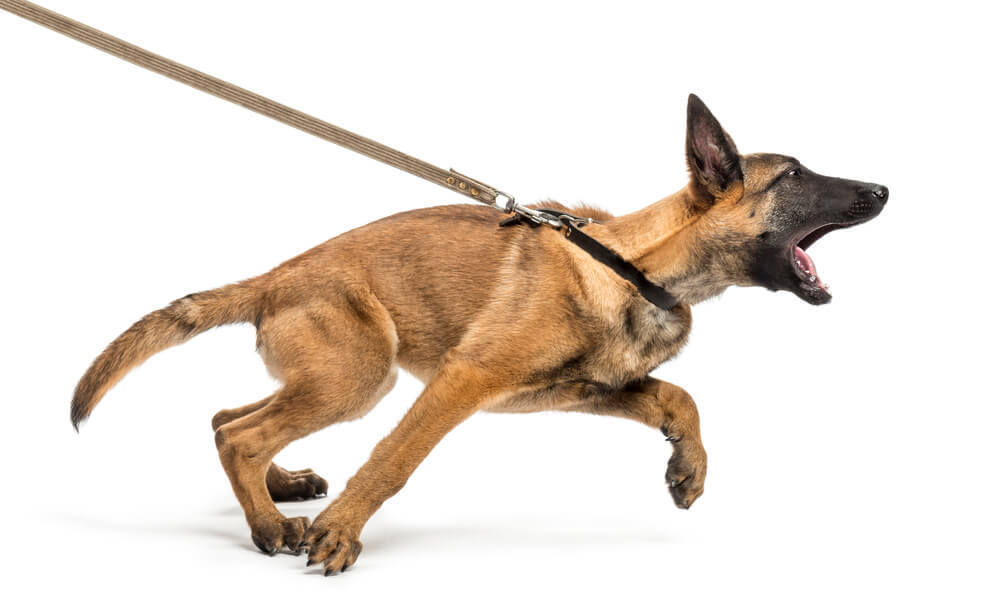
Body language tells us a lot about if we should approach a dog and when a dog is about to bite.
According to the ASPCA,
Many times, pet parents don’t recognize the warning signs before a bite, so they perceive their dogs as suddenly flying off the handle … It can be just milliseconds between a warning and a bite, but dogs rarely bite without giving some type of warning beforehand.
Knowing these signs of aggressive behavior in dogs can help you prevent unnecessary bites.
Some behaviors the ASPCA recommends looking out for are:
- Becoming still and rigid
- Guttural, threatening barks
- Lunging forward
- Mouthing or “muzzle punching”
- Growling, snarling, or snapping
- Biting
An aggressive dog may do all or some of these things. It happens very quickly, but if you’re familiar with the warning signs you gain time to react.
This split-second warning can help you diffuse the situation before a bite happens, or at least reduce the severity of an attack.
What To Do If A Dog Becomes Aggressive?
In the event that you come into contact with an aggressive dog, start by telling them “no” or “go home” in a confident, firm voice without making eye contact.
If the dog approaches you ready to bite or attack, curl into a ball with your head tucked in. Use your arms to cover your ears and neck. You can also use objects like a backpack, sweater, or purse to try to shield yourself.
Warning: You should always supervise new dogs and children. A child should not be left alone with a dog because you never know what might happen. It’s important for kids to learn to respect their dog’s space and play with them gently to avoid bites.
Do not make loud noises, panic, or try to run away from a dog that is being aggressive.
What happens to a dog that bites someone?
Rules vary from state to state, so it’s important to know the laws specific to the state where you live.
Your dog will most likely need to be quarantined and proof of their rabies vaccine will be required. If your dog is deemed dangerous they could be euthanized. Many places have a “one bite rule” and owners are held accountable for their dog’s actions.
When a bite happens, it’s important to communicate with the victim respectfully. In some places it’s illegal to leave the scene, so stick around and offer to do what you can to help. The best case scenario is that the victim isn’t badly injured and doesn’t pursue legal action.
Dealing with the aftermath of a dog bite can be an upsetting process, which is why training and knowledge is so important. Be responsible by socializing your dog and prevent situations where a bite could occur to protect your pup and yourself.
Consider Online Dog Training Programs
Whether you have a beginner puppy or an older dog in need of a refresher class at aggression, we recommended two online dog training courses.
Brain Training for Dogs and Doggy Dan's The Online Dog Trainer.
Both provide excellence in the delivery of dog behavior and dog training courses with some minor differences between the two.
The Brain Training for Dogs is a program by Adrienne Farricelli, a force-free professional CPDT-KA certified dog trainer. Her online training course revolves around force-free methods for canine brain development and behavior training. This is a great course for curious and bored dogs to help with anti-destructive behavior stemming from not being sufficiently stimulated.
There are 21 brain training activities in this course which are all exciting to play with your dog going from easy to very advanced. If aggressive chewing, pulling on the leash OR excessive barking is something you are struggling with, this video course is a good choice.
The Doggy Dan course is a behavioral training course using a mixture of ‘correction-style' training with aspects of positive, no-force methods, tackling problem behaviors like barking, phobias, separation anxiety and hyperactivity - in ways that are innovative and effective.

